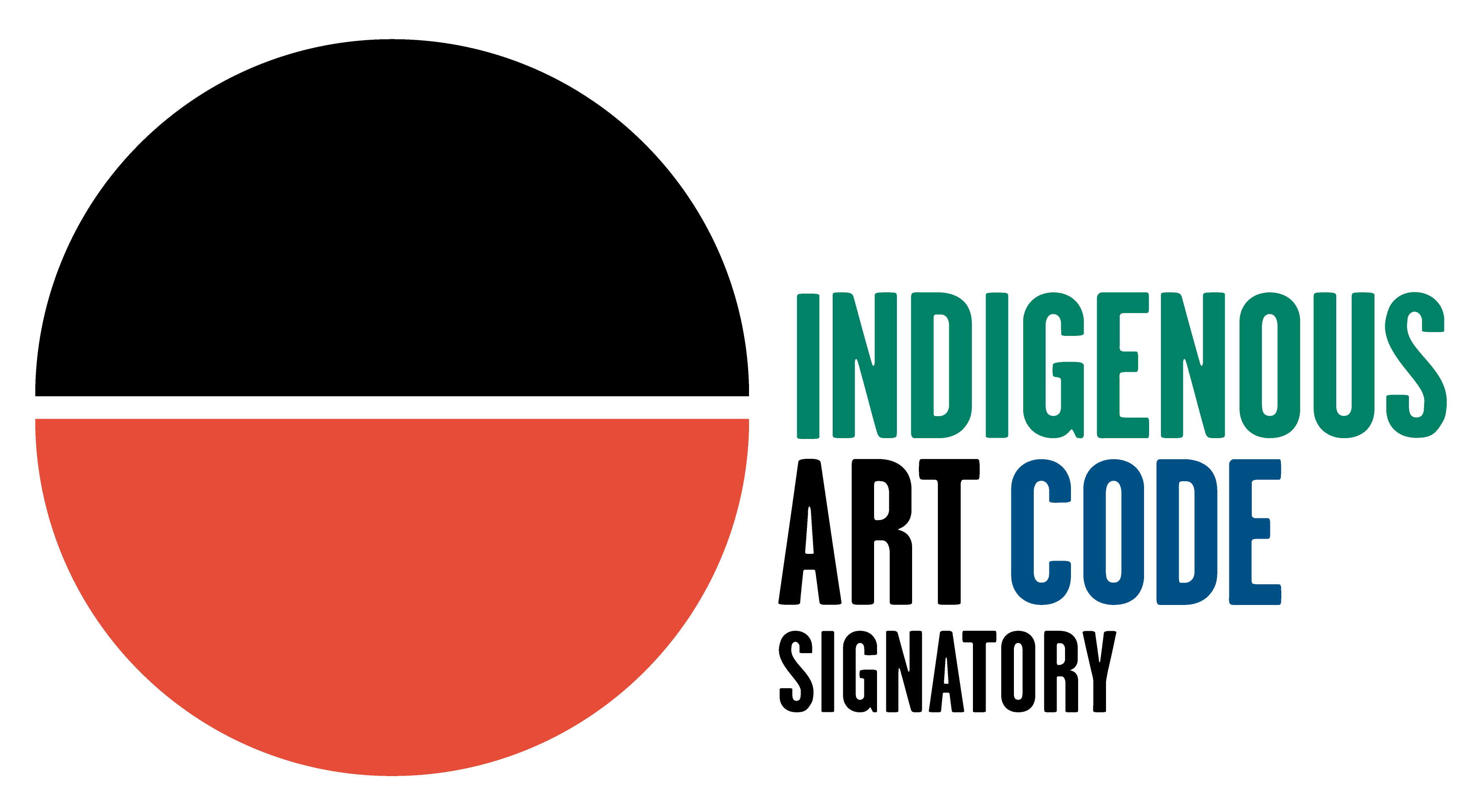Dhambit #2 Wanambi Yolngu , 7/07/1970-January 2023
54 3/4 x 25 1/4 in
A set of three rocks stand in the mouth of Trial Bay submerged either completely or partially within its waters. The waters of Gurka’wuy River flow out through Trial Bay past these rocks conflicting and clashing in a turbulent unity with the incoming tidal waters from the deep ocean. Their names rarely spoken are Dundiwuy, Bamurruŋu and Yilpirr.
Yalanba is the name of the place where the shiny black sand that adorns this work comes from. The sand occurs in one spot only at Bayapula near Garthalala on Caledon Bay. Her brother is named after this site. The old base for Donald Thomson's NTSRU in the Second World War. Dhambit can harvest it from this place because that area belongs to her clan the Marrakulu whose identity is depicted in this work. She also pays a tribute to the elder at Garrthalala who is from the grandmother of this place- it's märi, the Djapu clan. The place described in the work is a separate Marrakulu estate which has the same relationship to the Djapu. It is at the mouth of Trial Bay to the South of Caledon Bay.
The sacred and monolithic rock Bamurruŋu lies in the mouth of this bay submerged in its waters. In manikay (sacred song) it is sung to be surrounded by the Buku-Duŋgulmirri or Wawurritjpal (Sea Mullet) fish.
Yolŋu of this area speak of a hole submerged under the rocks, from where bubbles are seen rising to the surface, sometimes bursting forth with a rush. The bubbles are seen as a life force and a direct Ancestral connection for the Marrakulu.
When the Marrakulu perform ritual dances (buŋgul) for the events depicted in this painting participants move towards a held spear representing the steadfastness of the rock, splitting the dancers, who then surround the rock known as Bamurruŋu, moving as does the sea to song and rhythm of Yiḏaki and Bilma.
Bamurruŋu is a spiritual focus for an alliance of clans who share identity connected with the felling of the Stringybark tree.
This painting depicts the water clashing as it plays and mingles with that of the Djapu and Dhäpuyŋu clans. This Balamumu oceanic salt water rushing into the bay creates eddies, currents and patterns that delineate the relationship between the Djapu' and Marrakulu clans. This relationship is referred to as Märi-Gutharra. The maternal grandmother clan and its granddaughter. These waters are in this relationship as well. This is known as the ‘backbone’. One of the key relationships in a complex kinship system whose reciprocal duties are most powerful. These clans are both Dhuwa and share responsibilities for circumcising and burying each others clan members. A matriarchal analysis of the world that governs the behaviour of both sexes equally.
The hand sign for this relationship is to tap the top of one’s spine. It is the supporting skeleton of all relationships through the endless infinite line of women’s bodies.


